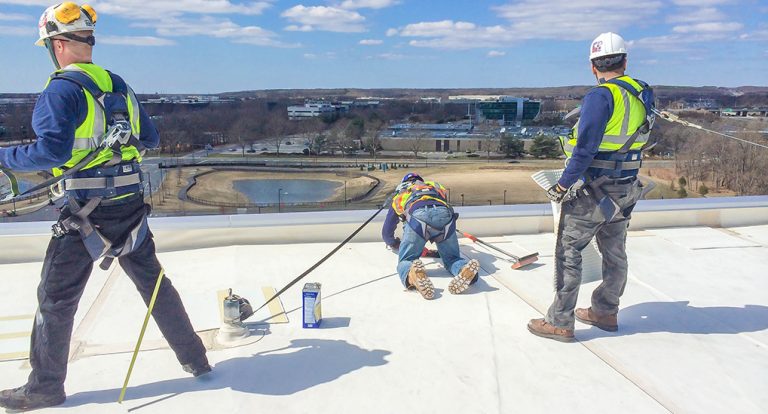The Occupational Safety and Health Administration has rules about fall protection, which is an integral part of workplace safety (OSHA). The OSHA fall protection standards protect people who work at heights from falling and getting hurt in other ways.
Whether you’re a construction worker, roofer, or any other worker who works at heights, it’s essential to know OSHA’s basic rules for fall protection to keep yourself and others safe. In this blog post, we’ll discuss everything that you need to know about these rules.
General Rules for Fall Protection from OSHA
The OSHA fall protection standards apply to all employers and employees who work at heights of more than four feet in the construction industry and six feet in the general industry.
Employers are responsible for giving their workers fall protection and must assess the workplace to find fall hazards. They must also set up fall protection systems that meet OSHA’s rules to keep workers from falling and protect them if they do.
Different Finds of Fall Protection
OSHA recognizes some different types of fall protection systems, such as:
Guardrails
Guardrails are barriers that keep workers from falling off a platform, balcony, or another elevated surface. They are an easy and effective way to keep workers from falling, and they can be used with other fall protection systems.
Safety Nets
Safety nets are used to catch a worker who falls and lessen the damage of a fall. They are put down below a worker to protect them if they fall. Most of the time, they are used in construction.
PFAS
Personal Fall Arrest Systems (PFAS) are systems that workers wear to keep them from falling and protect them if they do. Usually, they have a full-body harness, an anchor point, and a way to connect, like a lanyard or lifeline.
Positioning Systems
Positioning systems are made to keep people working at heights in a stable position. Most of the time, painters and window cleaners use them because they need both hands free.
Travel Restraint Systems
Travel restraint systems keep workers from getting to the edge of a surface and falling off. Most of the time, they are used with other fall protection systems, and most of the time, they are used in construction.
Personal Fall Arrest Systems Have Different Parts (PFAS)
Personal fall arrest systems have several parts, such as:
Anchor Points
These are the parts of the structure or surface where the PFAS is attached. They must be able to hold at least 5,000 pounds of force and be placed above the worker’s head to shorten the fall.
Full-Body Harnesses
Workers wear full-body harnesses to keep them from falling. They must be easy to put on, fit well, and be made of solid materials.
Connecting Devices
Lanyards and lifelines connect the full-body harness to the anchor point. They must be made of solid materials, be able to hold up to at least 5,000 pounds of force, and be no longer than six feet so that a fall won’t be as far.
Rescue and Retrieval Systems
Rescue and retrieval systems are usually needed for PFAS systems and are used to help a fallen worker. If a worker falls, they must be able to pick them up and move them to a safe place. They must also be nearby and easy to get to.
Selection and Use of Fall Protection Systems
Employers must consider the type of work being done, the height of the fall, and the resources they have when choosing a fall protection system. Also, it’s essential to ensure workers know how to use and take care of fall protection equipment.
Employers must ensure that fall protection equipment is used and kept so that it will work if someone trips and falls.
Putting OSHA’s Fall Protection Rules Into Place
Employers put fall protection policies in place and ensure that OSHA’s fall protection standards are followed. They also have to teach employees how to use fall protection systems and check the equipment regularly to ensure it is in good shape.
OSHA does inspections to ensure its fall protection standards are followed; if they aren’t, they can find the company. If an employer is found to be breaking OSHA’s rules on fall protection, they may have to pay a fine and make changes to their workplace to make it safe.
Key Takeaway
In conclusion, OSHA has rules about fall protection, which is an integral part of safety at work. To ensure their workers are safe, employers must know and follow OSHA’s rules on fall protection.
It’s essential to know about the different types of fall protection systems and the parts that make up personal fall arrest systems, whether you’re an employer or a team member. By following OSHA’s rules on fall protection, we can reduce the chance of falls and keep people from getting hurt at work.
To learn about OSHA rules and its basic fall protection guidelines, you can visit osha.com.

